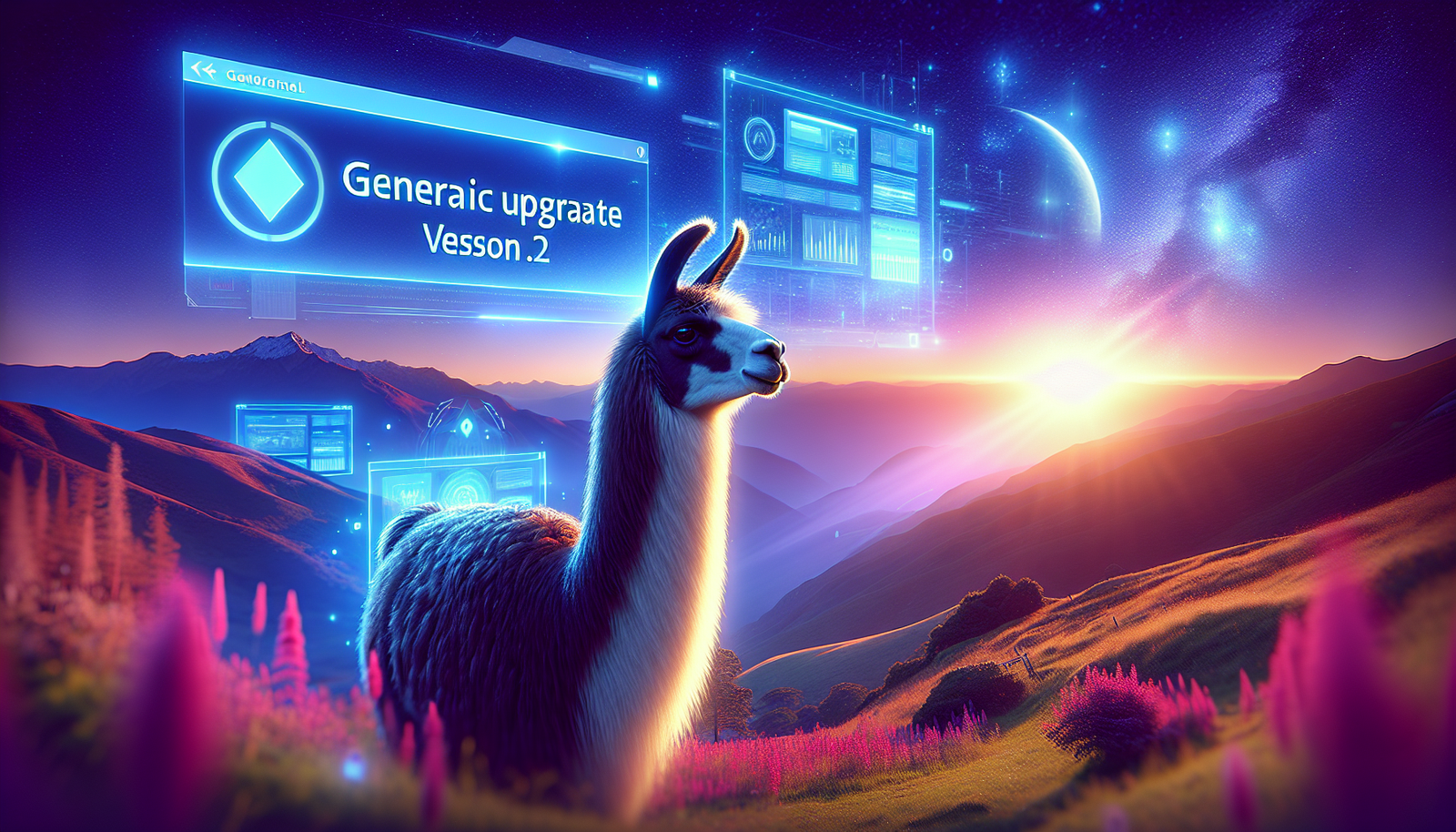Llama 3.2: A Significant Advancement in AI Development
The annual presentation by Meta, during the Meta Connect event, unveiled version 3.2 of Llama, marking a major milestone in the evolution of language models. This update introduces multimodal capabilities, allowing for a richer understanding of varied content. Industry analysts hail this advancement as a turning point for Meta AI.
The New Models of Llama 3.2
Meta has launched four distinct models with this update. Among them, two models are particularly noteworthy: a lightweight model with 1 billion parameters and a more robust model with 11 billion parameters. Researchers thus benefit from new options to adapt to specific AI needs.
The multimodal versions, integrating textual, visual, and auditory dimensions, make Llama 3.2 an essential player in the landscape of artificial intelligence. This flexibility allows users to combine and analyze data from various sources with unprecedented efficiency.
The Multimodal Capabilities
Llama 3.2 is described as Meta’s first multimodal language model. It offers the possibility to interact with various formats, including images, videos, and audio. This positions Llama 3.2 as a valuable tool for the development of innovative applications. The implications for human interaction with machines could be substantial.
The compact models, on the other hand, aim to facilitate implementation in environments where resources are limited. Meta has thus been careful to launch models designed not only for high performance but also for more accessible use.
The Issues and Challenges of Llama 3.2
Despite these promises, concerns remain about access to the capabilities of these models. Regulation in Europe could limit the application of Llama 3.2, raising questions among potential users. While Mark Zuckerberg announces advancements, ethical and regulatory implications revive the debate around AI.
Meta must also navigate a competitive landscape, where other companies, such as OpenAI or Google, are intensifying their research efforts. The dynamics of the artificial intelligence market are shaping up to be more competitive than ever.
Conclusion on Future Developments
This update of Llama 3.2 from Meta sparks new discussions about the future of AI. The integration of multimodal models expands the horizons of technology use, offering promising prospects for various sectors. The potential for innovation seems infinite, with the possibility of profound changes in how users interact with these advanced technologies.
Attentive analysts will eagerly announce the upcoming upgrades and Meta’s responses to regulatory challenges. The impact on businesses, education, and other rapidly changing areas is worth following closely.
FAQ: Llama 3.2 Update from Meta
What is Llama 3.2?
Llama 3.2 is the latest version of the series of language models developed by Meta, incorporating multimodal features, thus enabling it to process not only text but also images, video, and audio.
What are the main advantages of Llama 3.2 compared to its previous versions?
This update brings lighter and more compact models, thus facilitating their integration into various applications while improving the ability to process and analyze multimodal data.
How many models compose the new Llama 3.2 version?
Llama 3.2 consists of four models: two multimodal models and two textual models, thereby offering flexibility of use for different use cases.
How does Llama 3.2 process multimodal data?
The Llama 3.2 model utilizes advanced analysis and understanding algorithms to integrate and simultaneously process multiple types of data, such as text and images, providing a more comprehensive interpretation of information.
What parameters are available in the Llama 3.2 models?
Version 3.2 offers a model with 11 billion parameters and another with 90 billion, providing a choice based on performance and resource needs.
Is Llama 3.2 open-source?
Yes, Llama 3.2 is an open-source version, allowing the developer community to access and integrate these models into their projects.
What are the possible applications of Llama 3.2 in industry?
Applications range from a virtual assistant to tools for creating multimedia content, as well as data analysis and customer engagement tools.
How can businesses leverage Llama 3.2?
Businesses can use Llama 3.2 to automate processes, enhance user interaction through multimodal experiences, and analyze data to make informed decisions.
Is Llama 3.2 compatible with previous versions of Llama?
Yes, Llama 3.2 is designed to be compatible with previous features while offering significant improvements in terms of performance and capabilities.
Where can I find more information about Llama 3.2?
Detailed information can be obtained from the official Meta website, as well as in the documentation and developer forums.






